“Underneath the inviting charm of the idea is a serious scientific purpose — healthy babies, standardized babies, and always, year after year, Better Babies.”
– Woman’s Home Companion, 1913
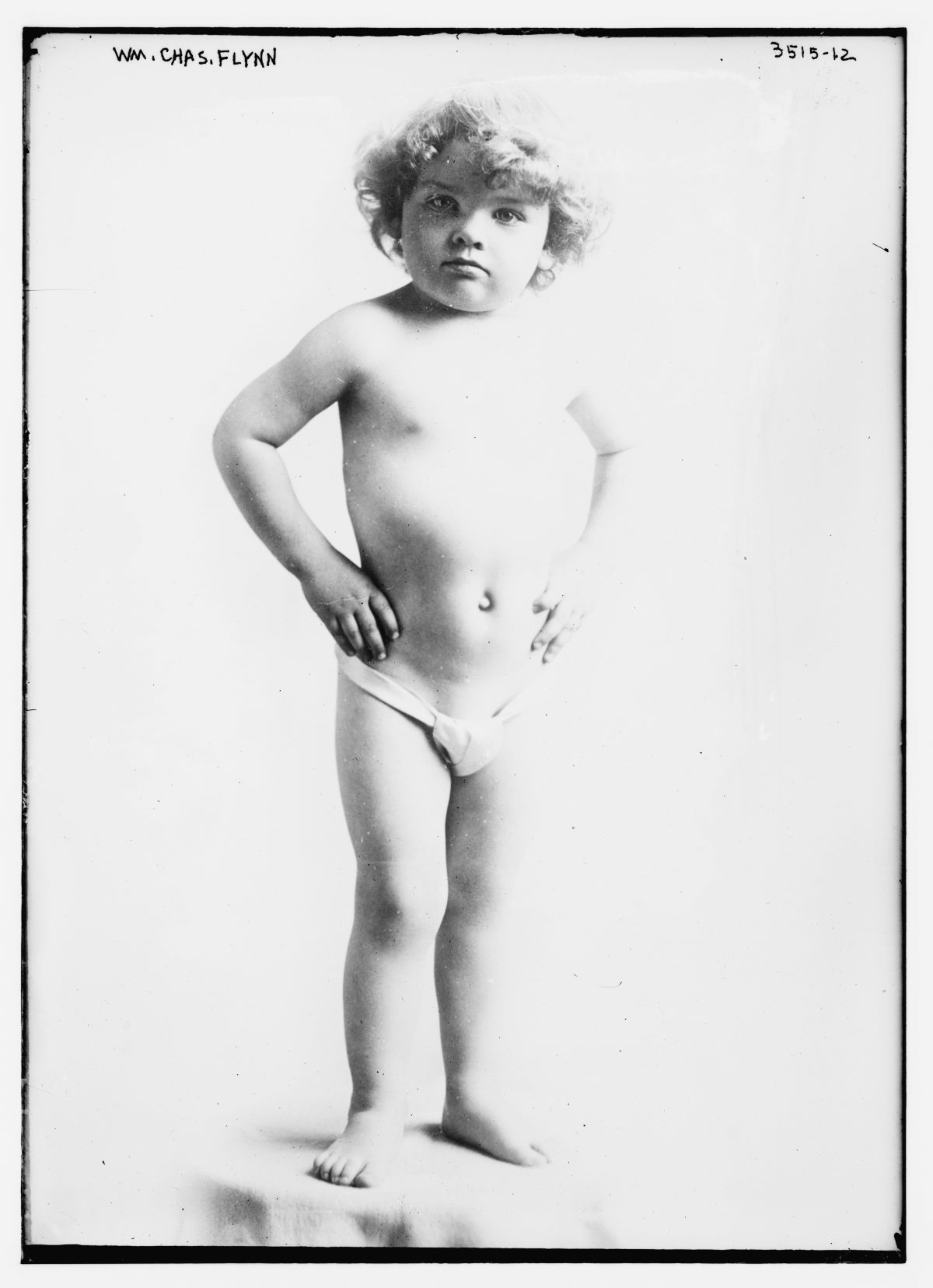
Meet William Charles Flynn, a multiple winner of “better babies” contests held through the US in the early 20th Century. That’s the young master in the above photo. For a while this ideal human being was pretty famous in the USA. The Spokesman-Review, of March 27, 1915, tells us that Flynn, 37 months old, had won 14 first prizes in baby eugenics shows. His mother and the mother of 17-month-old Alene Calvert Houck, a girl with 6 wins to her name, hoped their “perfect 100-point” children would later marry and produce the perfect specimen and thus improve the “stock”.
Here’s the newspaper’s story:
MATE FOUND FOR PERFECT BOY
Mothers of Eugenics Babies Plan Future Romance
LOS ANGELES – A perfect baby boy and a perfect baby girl have been dedicated to each other by their mothers in the hope that in the coming years love, guided by maternal hands, may lead to a eugenic marriage. The 100-point children that are unconsciously facing a made-to-order romance are William Charles Flynn, 37 months old, and Alene Calvert Houck, 17 months old.
After the babies emerged from a babies congress, each with a ‘perfection tag’, their mothers held a conference. Three times before the children have won first prizes in the same baby show. The boy is the winner of 14 first prizes, and the girl of six.
The mothers are convinced that fate has thrown their children together for some great purpose, but they have agreed that they will not resort to any form of coercion in shaping the futures of their children.
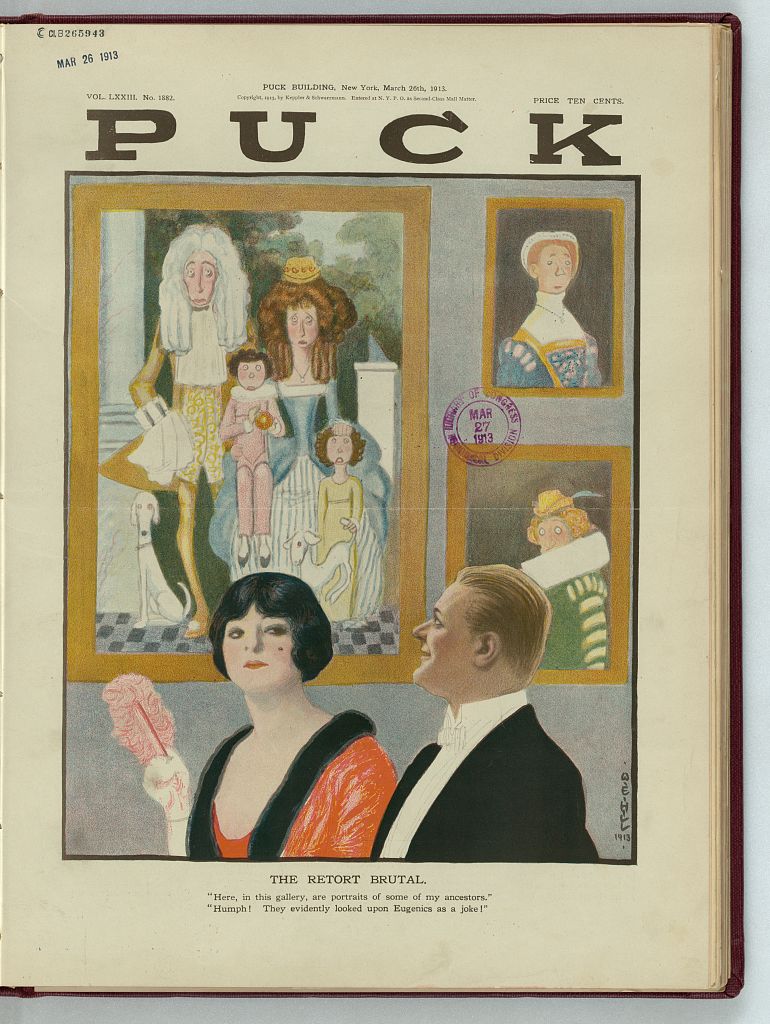
The Retort brutal by W.E. Hill, 1913.
The Cookie-Cut American
With reason powered by eugenics, the State could increase the prevalence of ‘desirable’ hereditary traits, such as physical prowess and intelligence, and reduce ‘dysgenic’ traits, which included diseases. In order to curtail ‘bad traits’ people with them were discouraged or prevented from having children, either through birth control or by social engineering. “In practice such measures included campaigns for practising birth control targeted at certain populations, voluntary and compulsory sterilisation, and, ultimately, euthanasia.” Through eugenics, humanity could be ‘regenerated’.
Let’s consider one example of an “undesirable trait”: epilepsy. Harvard neurologist and the president of the International League Against Epilepsy, Professor William Lennox, wanted to rid the world of epilepsy. One method was to prevent epileptics from having children. He wrote:
“Let us imagine that we have arrived at the land of ‘could be’ in the year 2048. Thanks to intelligently applied eugenics… epileptics are less numerous than a century ago. Also, heeding at last the injunction of Christ, ‘Be ye merciful,’ imbecile epileptics are no longer kept alive to endure a meaningless and miserable existence. Freed of these mindless lumps of flesh in human form, and staffed with adequately trained medical and social workers, institutions are no longer just stagnant pools of patients.”
In 1950, in a paper called The Moral Issue, Lennox advocated for the mercy killing of “children with undeveloped or misformed brains” as a way of opening up space in “our hopelessly clogged institutions”.


via Eugenics Society archive
This was no simple story of Nazis versus the virtuous Left. Eugenics meant hymned socialist George Bernard Shaw (26 July 1856 – 2 November 1950) could write: “The only fundamental and possible socialism is the socialisation of the selective breeding of man.” British Left wing magazine The New Statesman told its well-heeled readers in July 1931: “The legitimate claims of eugenics are not inherently incompatible with the outlook of the collectivist movement. On the contrary, they would be expected to find their most intransigent opponents amongst those who cling to the individualistic views of parenthood and family economics.” The lot of the lumpenproletariat could be improved by them not existing.
Apanar Nair looks at how such thinking took hold, led to mass murder and notes how some laws based on the idea of good and bad genes were scrapped only recently:
Nazi Germany saw the systematic implementation of eugenic principles targeting disabled and chronically ill people (described as “useless eaters”). The 1933 Law for the Prevention of Offspring With Hereditary Diseases sought the eradication of disability and disease through mass sterilisation of those identified as incurable or having certain diseases or conditions. ‘Feeble-mindedness’ was the most common criterion for forced sterilisation, and epilepsy was the third most common.
Ultimately, the Nazi eugenics policies led to the murder of thousands of people in a programme called Aktion T4 in which doctors and asylum superintendents across the country identified ‘incurable’ patients to be killed…
In the United Kingdom, the 1937 Matrimonial Causes Act stated that a marriage could be rendered null and void if “either party were at the time of the marriage of unsound mind, or a mental defective… or subject to recurrent fits of epilepsy”.
In the United States, people with epilepsy were refused the right to marry in several states and were among the groups targeted by the so-called ‘ugly laws’, which allowed disabled people in public spaces who were deemed to be unsightly or disruptive to be locked up…
Another area of policy and legislation influenced by eugenics was immigration. Immigration laws in the United Kingdom, United States and Australia in the early 20th century were explicitly designed to exclude migrants with a host of health conditions, both contagious and non-contagious.
In the United States, immigration law kept out entire families if a single child in the family had been diagnosed with epilepsy. In Australia, successive immigration acts ensured that ‘epileptics’ were disqualified from migrating to the country until 1989.

In this poster promoting the Nazi magazine Neues Volk, the caption reads: “This hereditarily ill person will cost our national community 60,000 Reichsmarks over the course of his lifetime. Citizen, this is your money.” 1938.
In March 1924, Virginia lawmakers passed a law that authorized the forced sterilization of people confined to government asylums because they were deemed “feebleminded.” In the 1927 case Buck v. Bell, Justice Oliver Wendell Holmes upheld the law’s constitutionality, infamously declaring that “three generations of imbeciles are enough.” In the following years, the number of states with forced sterilization laws grew to 30. Virginia’s Racial Integrity Act, not struck down until 1967, prohibited anyone who wasn’t white from marrying a white person, to discourage perceived contamination of the white race. Influenced by eugenics lobbyists, Congress passed the National Origins Act of 1924, imposing quotas that effectively cut off immigration from Southern and Eastern Europe, regions deemed to have genetically inferior races.
From 1907 to the 1970s, approximately 60,000 people were sterilized in the US. The last forced sterilization in the U.S. was performed in Oregon in 1981.
That was then, right? Get this from 2017:
Inmates in White County, Tennessee have been given credit for their jail time if they voluntarily agree to have a vasectomy or birth control implant, a popular new program that is being called “unconstitutional” by the ACLU.
On May 15, 2017 General Sessions Judge Sam Benningfield signed a standing order that allows inmates to receive 30 days credit toward jail time if they undergo a birth control procedure.
![Effects of eugenic sterilization as practiced in California ... The Human betterment foundation, Pasadena, California. [1937?].](https://flashbak.com/wp-content/uploads/2021/02/Effects-of-eugenic-sterilization-as-practiced-in-California-...-The-Human-betterment-foundation-Pasadena-California.-1937.-1200x1796.jpg)
Effects of eugenic sterilization as practiced in California … The Human betterment foundation, Pasadena, California, 1937
The Better Babies Bureau
As with most bad ideas, the search for ‘better babies’ like William Charles Flynn and, by turn, the means to identify worse babies, began as a useful one. Concerns over high infant mortality in the United States created calls for “baby saving”. In 1910, between 100 and 200 of every 1000 infants born in the US perished. This new mission would promote the well-being of infants and children by educating parents, especially mothers, in preventive health and hygiene practices.
Organizers of Better Babies shows varied in their aims and purposes. Some wanted a simple beauty contest. Others sought to promote the new practice of pediatrics. For many it was part of a process of presenting science-based facts to reinforce notions of racial superiority.
“These initiatives relied on standards for normal child development, as well as input from healthcare professionals and public health officials,” notes the Eugenics Archive. “Better Babies Contests addressed this concern for child welfare and physical development, becoming the first eugenic competitions held at state fairs.”
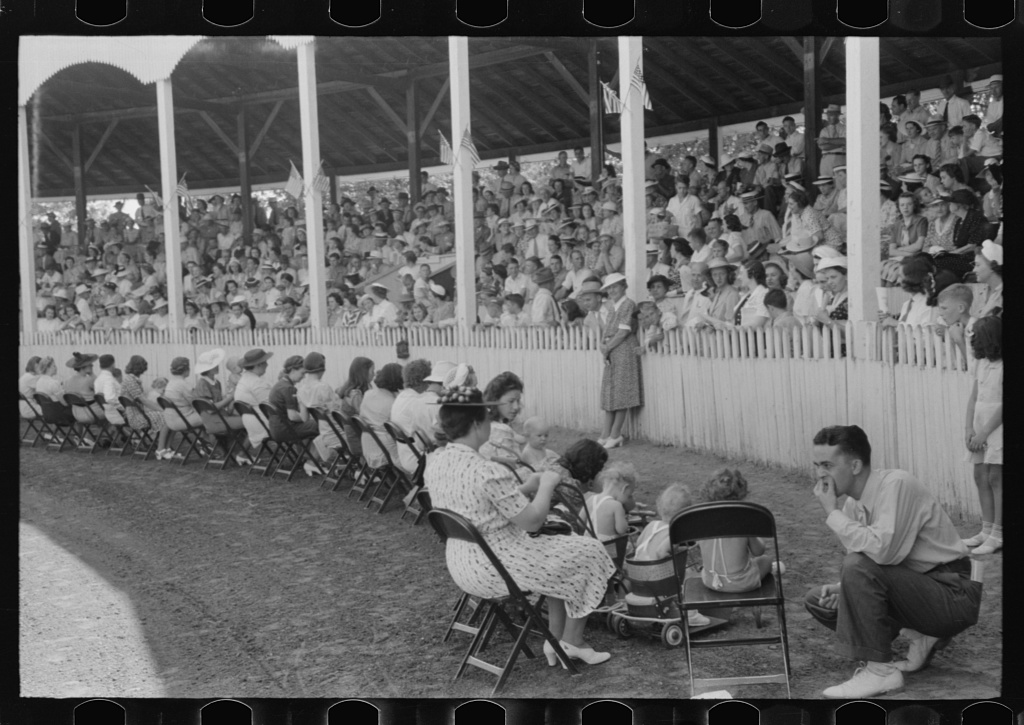
Healthiest baby contest at Shelby County Fair and Horse Show, Shelbyville, Kentucky by Marion Post Wollcott, 1940
The first “Scientific Baby Contest” to combine these standards was initiated by Mary DeGarmo in 1908 at the Louisiana State Fair. DeGarmo linked the competitions to the social efficiency movement and its call for standardized homes, roads, and schools. Many Progressives believed that such standardization would improve the lives of young children.
With the assistance of Dr. Jacob Bodenheimer, measures of contestants’ physical and intellectual development were carefully recorded. Winning contestants often appeared in graduation gowns and were presented with “loving cups” to mark their achievement. By 1913, the Woman’s Home Companion magazine co-sponsored the contests, which were simply known as “Better Babies Contests.” The magazine presented certificates signed by DeGarmo and Bodenheimer documenting that winners had “a sound mind in a sound body.”
Being a winner meant being healthy, strong, and, implicitly, white. The winning baby epitomised the ideal American family. As DeGarmo later wrote, “Much interest was shown as to the ‘Blood Will Tell’ theory. IT DID TELL.”
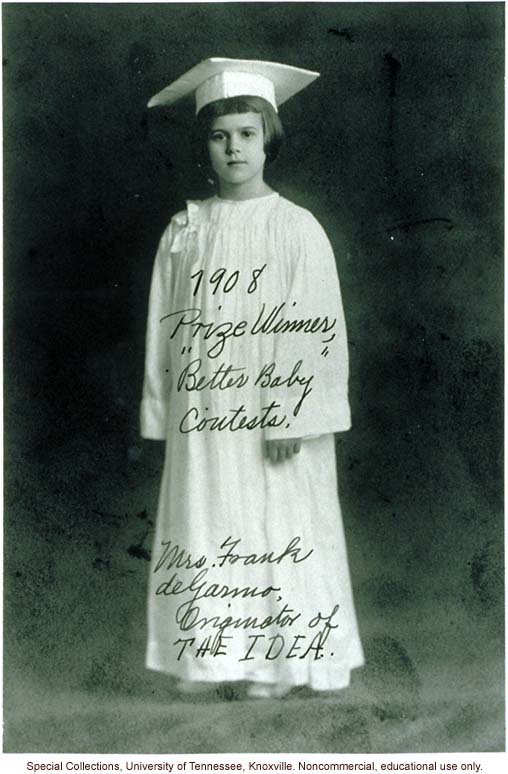
“1908 Prize Winner, “Better Baby’ Contests. Mrs. Frank deGarmo, Louisiana State Fair, Shreveport, 1908
Francine Uenuma notes how media spread the message:
DeGarmo’s success caught the attention of a national magazine, the Woman’s Home Companion, which created its own standardized – and very thorough – scorecard and formed the Better Babies Bureau to encourage community groups to hold their own contests. In 1913, the WHC spotlit Degarmo’s efforts in Louisiana, because “underneath the inviting charm of the idea is a serious scientific purpose – healthy babies, standardized babies, and always, year after year, Better Babies.”
The movement was “sweeping the whole country”, thundered one editorial. “The earnest enthusiasm of physicians, of men and women interested in social questions, of fathers and mothers who place their children before everything else, gives the movement…the quality of majesty.”
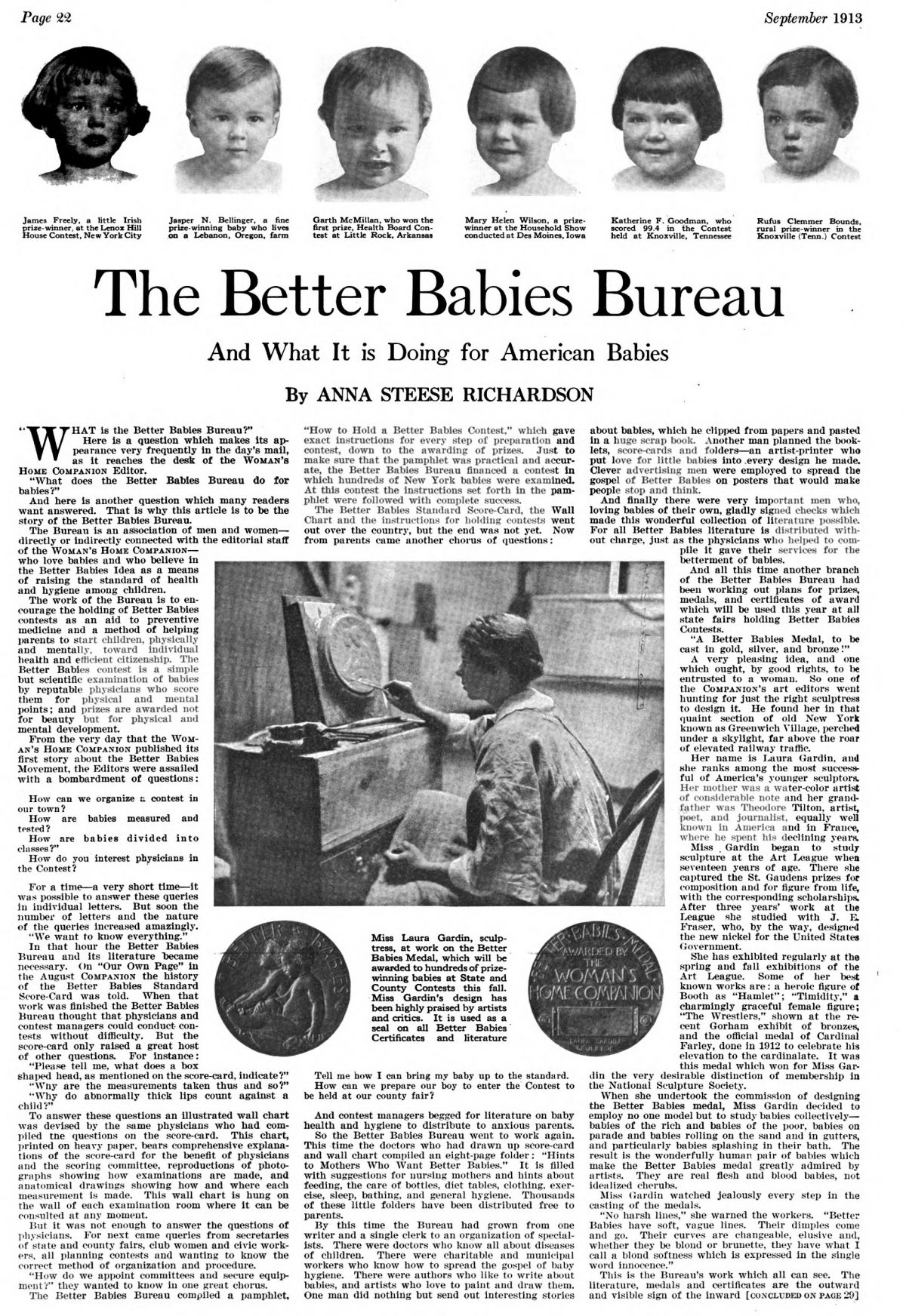
Better Babies Bureau
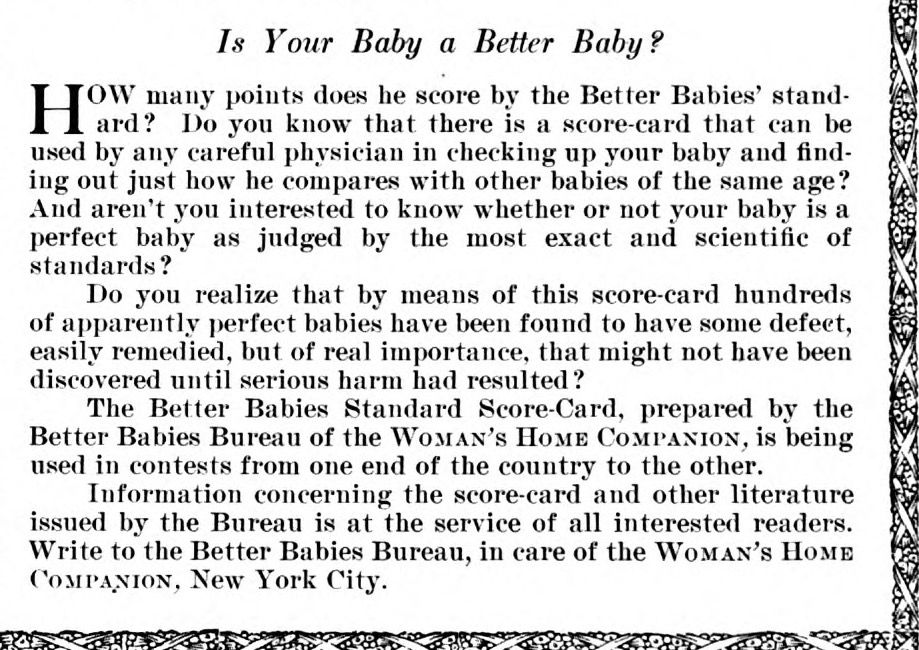
Woman’s Home Companion, 1913
In a review of Better Baby Contests: the Scientific Quest for Perfect ChildhoodHealth in the Early Twentieth Century by Annette K.Vance Dorey, Lyrme Curry adds more context:
With grassroots support from middle-class clubwomen, community activities such as child health demonstrations, films and magic lantern shows, and entire weeks devoted to “baby saving” appeared in both urban and rural venues. It was in America’s heartland, however, that the particular innovation of the better baby contest thrived most vigorously….
Parents entered their offspring to learn more about child hygiene and to see how they measured up to the new standards being promulgated for children’s height, weight, healthful appearance, and behavioral development; organizers often sweetened the deal by offering cash prizes to the winners. Thousands of curious onlookers enjoyed the spectacle of babies on display…
Working with the American Medical Association’s Committee for PubHc Health Education Among Women, the Iowa Congress of Mothers organized the state’s first contest in 1911 and went on to form the American Baby Health Contest Association to promote the idea nationwide. Iowa clubwomen sponsored these events “relentlessly” on both the state and local levels until the 1950s.
Fitter Families For Future Fireside Competition
The contests morphed into the Fitter Families for Future Firesides Competition:
Mary T. Watts and Florence Brown Sherbon had organized Better Babies in Iowa in 1911. However, in 1920 they were provided new evaluation forms by Charles Davenport, who was then a member of the American Association for the Study and Prevention of Infant Mortality (AASPIM). Using Davenport’s forms, they organized the first “Fitter Families for Future Firesides Competition” at the Kansas State Free Fair.
Watts and Sherbon added a hereditarian explanation for human differences to the Better Babies Contests’ earlier focus on child development and welfare. Thus completed the transformation of Scientific Baby Contests as a vehicle popularizing eugenic ideas.
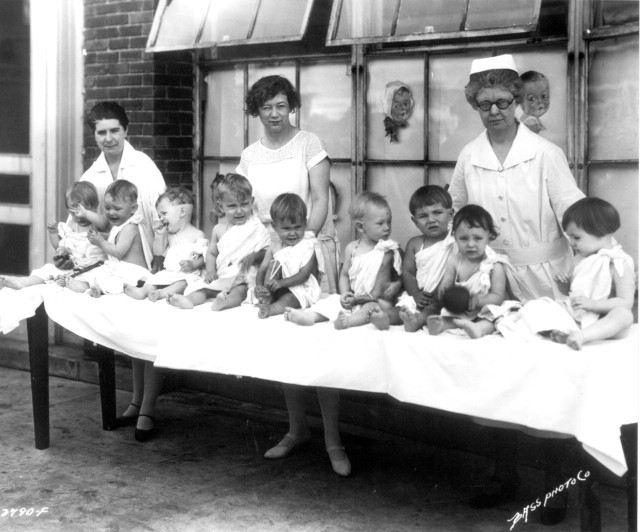
Baby Contest Building and spectators, Indiana State Fair, 1929 (Photo courtesy of the Indiana State Archives, Indiana Commission on Public Records.)
The Black Stork
Eugenics was mainstream, so much so that in 1917 you could watch a eugenics movie on the silver screen. The Black Stork was a “eugenics love story”. The plot sees a young man and woman considering marriage. Harry J Haiselden, Chief Surgeon at the German-American Hospital in Chicago, warns that they are ill-matched and will produce defective offspring. He is right. Their baby is born defective, dies quickly and floats into heaven.
A South Carolina minister encouraged parents to bring their teenage children to watch the film so they could see what might come from sexual promiscuity, criminality, drinking and “race mixing.” Some theater bills added the catchy subtitle: “The Scourge of Humanity.”
Who Haiselden was and his role in eugenics and The Black Stork is told by Stephen J. Taylor for the Hoosier State Chronicles:
In 1915, a case in Chicago plunged Americans into a heated debate about medical ethics.
That November, Dr. Harry J. Haiselden, chief surgeon at the German-American Hospital in Chicago, was faced with a tough dilemma. A woman named Anna Bollinger had just given birth to a child, John, who suffered from severe birth defects. John had no neck or right ear and suffered from a serious skin ailment, all judged to be the result of syphilis likely passed on by his father. Dr. Haiselden knew that he could save the child’s life through a surgical procedure. But since he was familiar with the conditions into which Illinois’ “feeble-minded” were thrown after birth, he convinced the child’s parents to let John die at the hospital. When the news came out that the doctor wasn’t going to perform the necessary surgery, an unknown person tried to kidnap the child and take it to another hospital. The kidnapping attempt failed and John Bollinger died.
…
Chicago social worker and suffragette Jane Addams came out against Haiselden. Short of the death penalty for murder, Addams said, no doctor had the right to be an unwilling person’s executioner. “It is not for me to decide whether a child should be put to death. If it is a defective, it should be treated as such, and be taught all it can learn,” she added.
Support for Dr. Haiselden, however, came from many famous social activists. Among them was Helen Keller — advocate for the disabled, a Socialist, and a eugenics supporter (at least in 1915.) Keller, who was blind and deaf since the age of one but thrived against all odds, published her views on the Haiselden case in The New Republic. She thought that children proven to be “idiots” by a “jury of expert physicians” could and perhaps should be put to death. Chicago lawyer and civil liberties crusader Clarence Darrow — who famously went up against eugenics critic William Jennings Bryan at the 1925 Scopes Monkey Trial — made no bones about his support for the surgeon: “Chloroform unfit children,” Darrow said. “Show them the same mercy that is shown beasts that are no longer fit to live.” Indiana Socialist Eugene V. Debs also supported Haiselden’s decision.
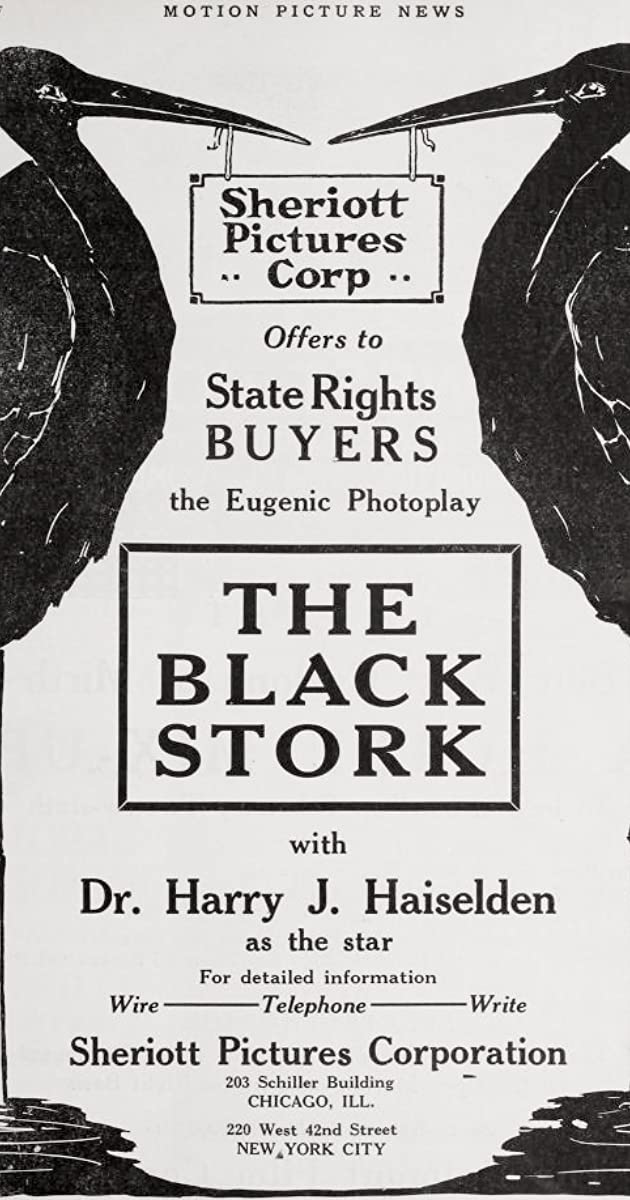
Galton’s Human Stock
The Eugenics Archive has more on the dangerous fad for creating a hierarchy of humans. The idea of a modern project for improving the human population through selective breeding was developed by English statistician Francis Galton (16 February 1822 – 17 January 1911). Building on work by German thinker Ernst Haeckel (16 February 1834 – 9 August 1919) and his cousin Charles Darwin (12 February 1809 – 19 April 1882), Galton wondered if theories on the development of plant and animal species could be applied to humans. In 1883, Galton gave his research a name: eugenics.
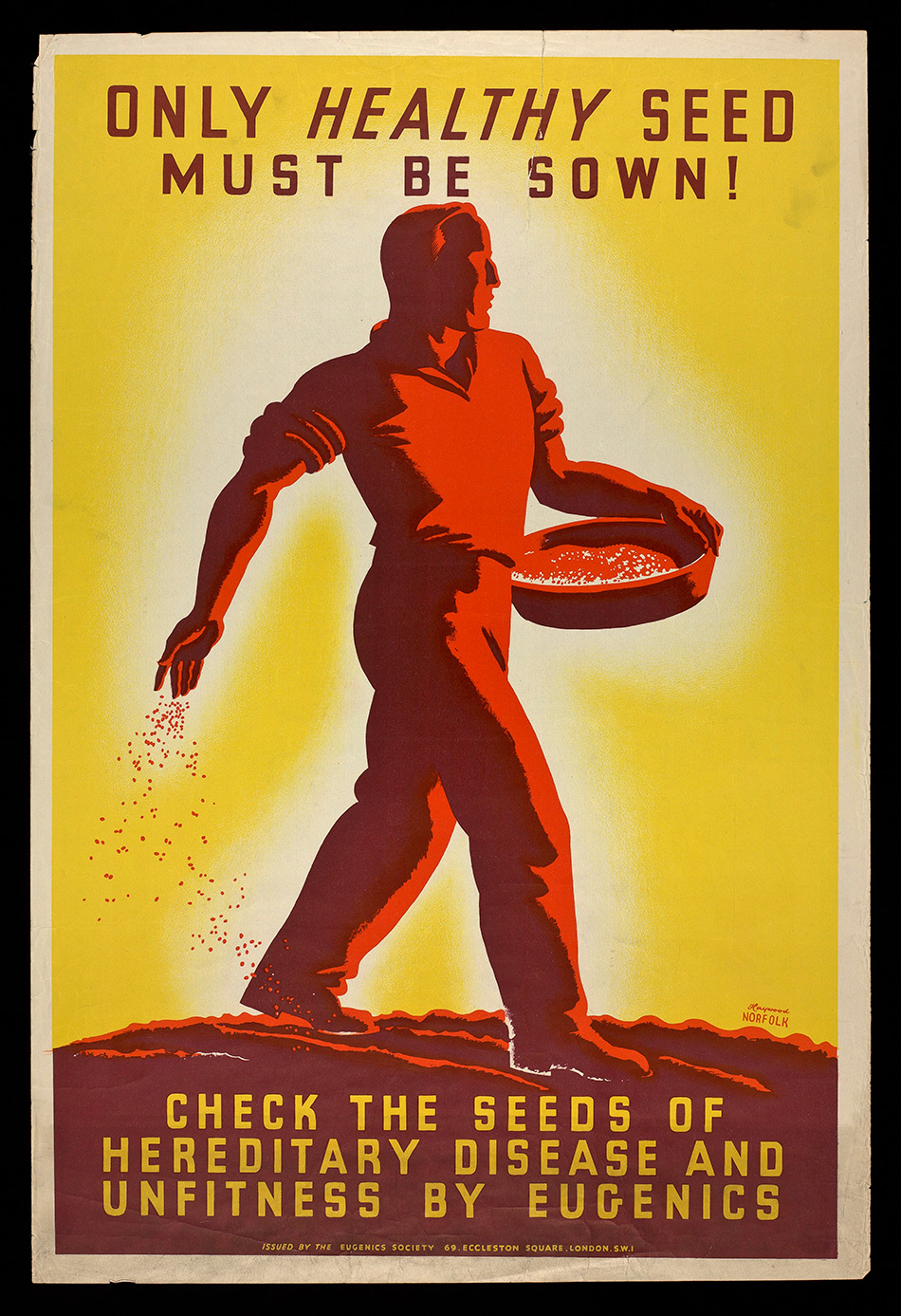
1920s eugenics poster
Galton relied heavily on the system for human physical measurements (anthropometry) developed by the French criminologist Alphonse Bertillon (22 April 1853 – 13 February 1914). He measured and collected anthropomorphic data on a host of human attributes including longevity, muscle strength and ‘success in life’. He put it that the British race risked degeneration because of the differential birth rates between the “feckless poor” and the “responsible middle class”.
When one considers the strong contribution of agricultural breeding to the eugenics movement, it is not difficult to see why eugenicists used state fairs as a venue for popular education. A majority of Americans were still living in rural areas during the first several decades of the 20th century, and fairs were major cultural events. Farmers brought their products of selective breeding — fat pigs, speedy horses, and large pumpkins — to the fair to be judged. Why not judge “human stock” to select the most eugenically fit family?
This was exactly the concept behind Fitter Families for Future Firesides — known simply as Fitter Families Contests. The contests were founded by Mary T. Watts and Florence Brown Sherbon — two pioneers of the Baby Health Examination movement, which sprang from a “Better Baby” contest at the 1911 Iowa State Fair and spread to 40 states before World War I. The first Fitter Family Contest was held at the Kansas State Free Fair in 1920. With support from the American Eugenics Society’s Committee on Popular Education, the contests were held at numerous fairs throughout the United States during the 1920s.
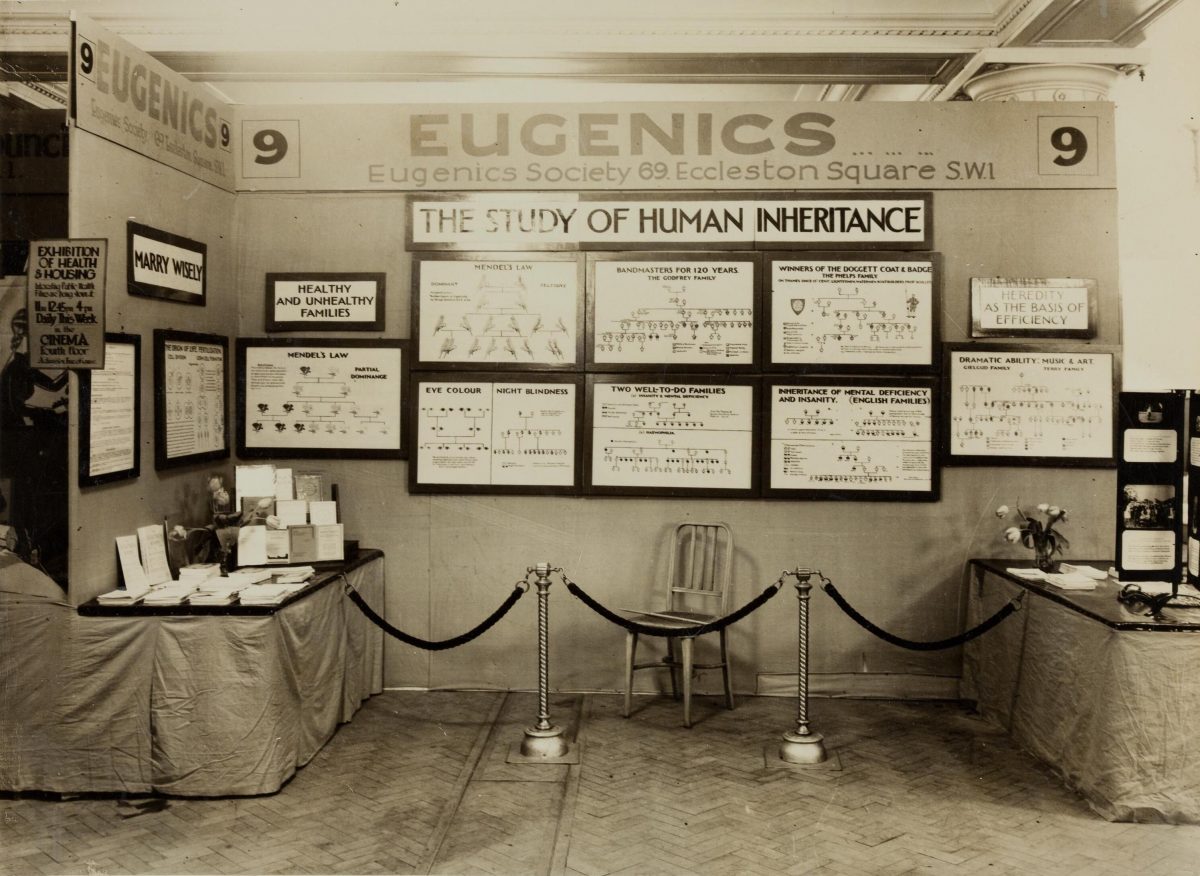
Eugenics – 1930s
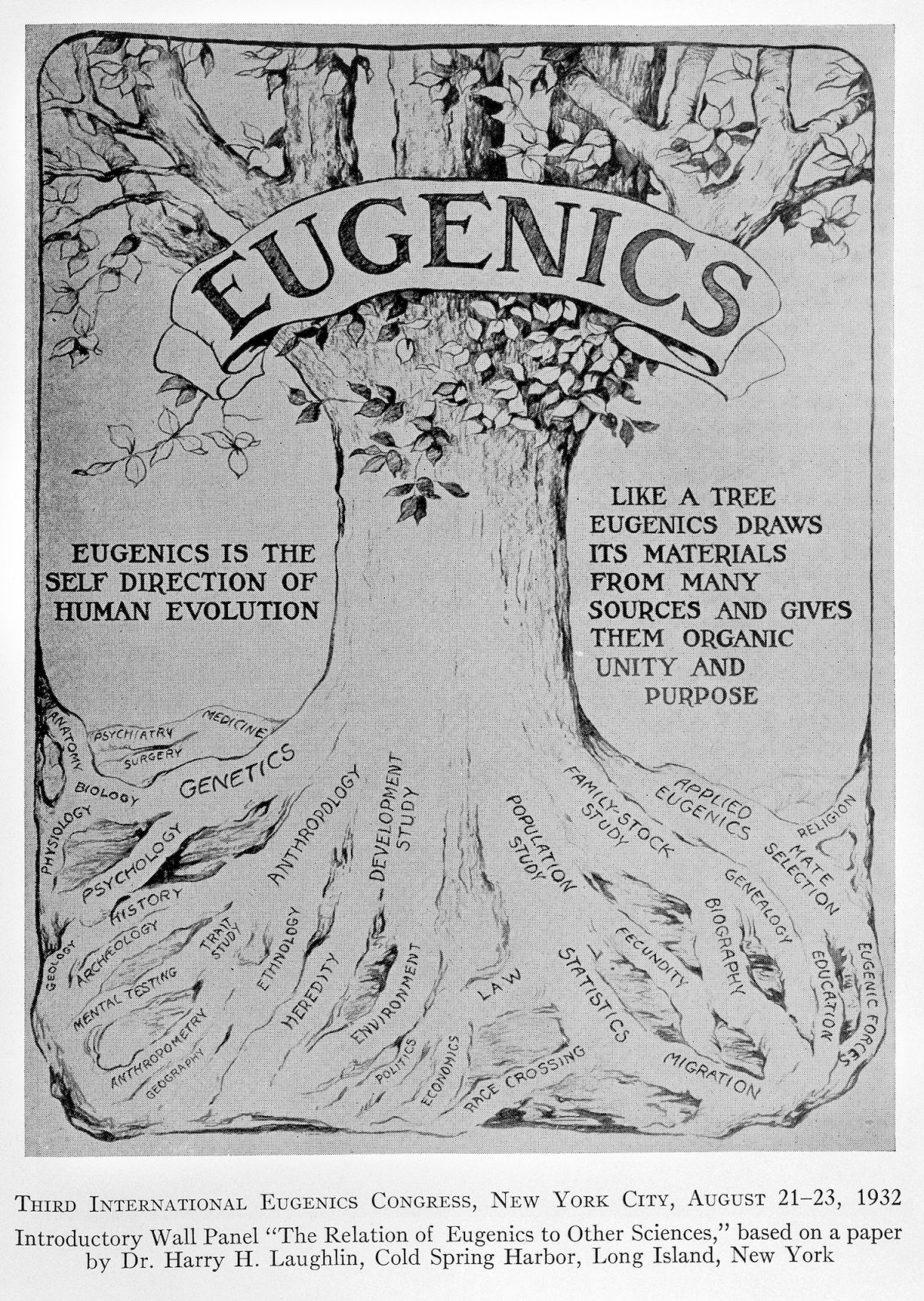
At most contests, competitors submitted an “Abridged Record of Family Traits,” and a team of medical doctors performed psychological and physical exams on family members. Each family member was given an overall letter grade of eugenic health, and the family with the highest grade average was awarded a silver trophy. Trophies were typically awarded in three family categories: small (1 child), medium (2-4 children), and large (5 or more children).
All contestants with a B+ or better received bronze medals bearing the inscription, “Yea, I have a goodly heritage.” Childless couples were eligible for prizes in contests held in some states. As expected, the Fitter Families Contest mirrored the eugenics movement itself; winners were invariably White with western and northern European heritage.

Healthiest baby contest at Shelby County Fair and Horse Show, Shelbyville, Kentucky by Marion Post Wolcott, 1940
We don’t know what became of William Charles Flynn. Did he hook up with Alene and breed? Are you one of their descendants?
Top Ten Unlikely and Surprising Eugenicists
Would you like to support Flashbak?
Please consider making a donation to our site. We don't want to rely on ads to bring you the best of visual culture. You can also support us by signing up to our Mailing List. And you can also follow us on Facebook, Instagram and Twitter. For great art and culture delivered to your door, visit our shop.


